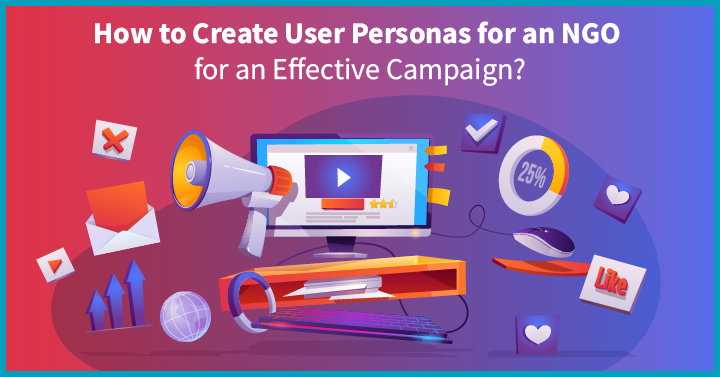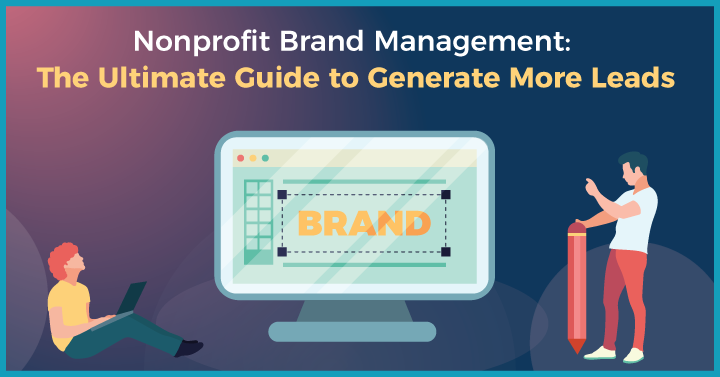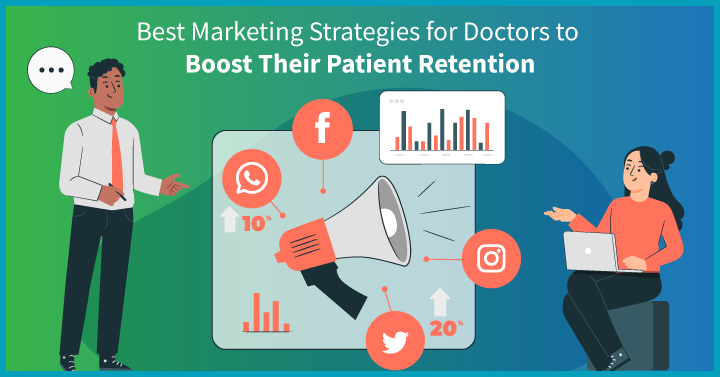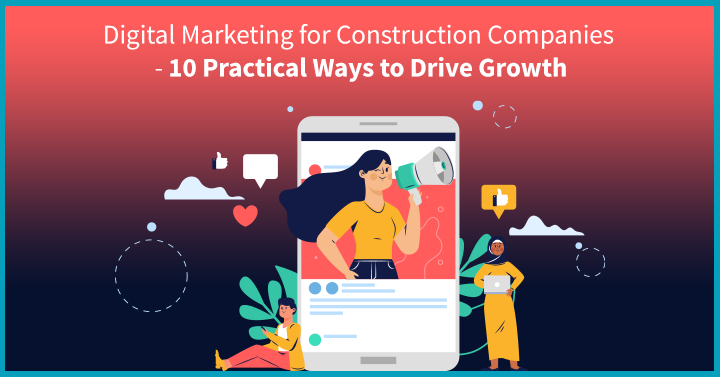According to PR Newswire, the global digital advertising and marketing market was estimated at $350 billion in 2020 and is projected to reach $786.2 billion by 2026.
As the above statistics suggest, businesses are increasingly channelling their resources into digital marketing to connect with their target audiences and enhance their sales figures. However, this widespread adoption of digital marketing techniques has also intensified competition, making it more challenging for organisations to achieve the desired ROI.
So, how can you make your business stand out and maximise its returns through digital marketing efforts?
The key lies in developing a well-crafted digital strategy that engages your target audience, drives conversions, and fosters a loyal customer base.
In this blog, we will explore ten indispensable best practices that will empower you to harness the potential of a digital strategy and boost your revenue.
Let’s get started.
1. What is a Digital Strategy & its Significance?
A digital strategy is a comprehensive plan outlining how a business can leverage digital technologies, channels, and platforms to connect with its target audience and achieve its objectives.
It comprises various aspects of an organisation’s online presence, including website, social media, content marketing, paid advertising, and more. The primary goal of a digital strategy is to build a brand’s online presence, boost customer engagement, and drive growth.
Let’s consider an example of an e-commerce company selling activewear, striving to gain target audiences’ attention and increase sales through digital marketing efforts.
The key elements of the digital strategy for this e-commerce company would include:
- Website optimisation – To improve user experience and faster load time.
- Search Engine Optimisation – To optimise website content with relevant keywords and creating high-quality blogs.
- Social Media Marketing – To build presence on platforms like Facebook, LinkedIn, and Instagram.
- Paid Media Advertising – To run Google Ads and social media ad campaigns and target users interested in sports and fitness.
- Performance Monitoring – To analyse KPIs such as website visits, conversion rate, and return on ad spend (ROAS) and adjust campaigns accordingly.
By incorporating these elements in their digital strategy, the e-commerce company can reach its target audience and accelerate conversions.
Now that you understand digital strategy, let’s look at its significance.
1.1 Significance of Digital Strategy
Here are points elaborating on the importance of digital marketing strategy –
- Alignment With Business Goals – A well-defined digital strategy ensures it is closely aligned with business goals and helps improve the bottom line.
- Global Reach – With digital marketing, businesses can expand to new markets and geographies quickly and efficiently.
- Improved Engagement – It helps understand customer preferences and pain points, leading to personalised interactions and improved engagement.
- Cost-Effectiveness – Digital outreach methods are more cost-effective than traditional marketing methods.
- Data-Driven Decision-Making – A digital strategy collects, analyses, and utilise relevant customer data to make informed decisions.
- Competitive Advantage – An effective digital strategy can help businesses innovate, improve their offerings, and stand apart from their competitors.
Now that you are acquainted with benefits of digital strategy, let’s delve into the best practices to create an effective one –
2. Best Practices to Create a Digital Strategy for Your Business
Creating a well-planned digital marketing strategy is vital for businesses of all sizes to achieve their marketing objectives and grow their online presence. Here are the key steps to creating an efficient digital marketing strategy –
2.1. Set SMART Marketing Goals & Key Performance Indicators (KPIs)
The first step to crafting an effective marketing strategy involves establishing Specific, Measurable, Achievable, Relevant, and Time-bound (SMART) goals. Once you have defined objectives, you can set relevant KPIs to measure success. Goals and KPIs serve as benchmarks, allowing you to track progress and make adjustments to your campaigns as needed.
For example, a startup aiming to launch a new mobile app can set a SMART goal to acquire 10,000 app downloads within the first three months of its release. By diligently monitoring the number of downloads and analysing user feedback, they can fine-tune their marketing approach, potentially leading to increased downloads and improved app retention.
2.2. Conduct Market Research & Perform Competitor Analysis
A well-thought-out digital strategy entails conducting comprehensive market research to understand the target audience’s needs, preferences, pain points, and behaviour. In tandem, analysing competitors’ digital presence can provide valuable insights into their strategies, helping you identify opportunities to gain a competitive advantage.
For example, a fashion brand looking to expand its online presence can conduct market research to identify the demands and preferences of its target audience. Further, they can analyse competitors’ SEO and social media strategy to develop marketing campaigns that set them apart.
2.3 Create Buyer Personas to Understand Potential Customers
To craft targeted and personalised marketing campaigns, it is crucial to develop detailed buyer personas. These personas are fictional representations of your ideal customers based on demographic information, motivations, pain points, interests, and online behaviour. The deep understanding of prospective customers enables you to create tailored content and messaging, boosting conversions and customer loyalty.
For instance, for an app development company, the buyer persona would represent different business groups, such as apps for startups and e-commerce. By understanding the distinct preferences of each group, the company can design marketing messages that address their unique concerns like cost-effective app development services for startups and user-friendly apps for e-commerce.
2.4. Define the USPs of Your Product/Service Offerings
Unique selling propositions (USPs) are the distinct attributes that set your products or services apart from competitors. It is essential to determine USPs or the key differentiators as they act as compelling reasons for potential customers to choose your offerings over others. Further, you can highlight the USPs of your products or services in your messaging and showcase how your brand stands out in the marketplace.
For example- an eco-friendly cleaning product company can have a USP of using all-natural, non-toxic ingredients that are safe for the environment and consumers. By incorporating this USP, they can target environmentally conscious consumers looking for eco-friendly alternatives, differentiating themselves from traditional cleaning products laden with harmful chemicals.
2.5. Leverage Omni-Channel Marketing Tactics for Your Campaign
In today’s interconnected world, consumers interact with brands across multiple digital channels, such as social media, email, and websites. Hence, businesses must employ an omnichannel marketing approach to deliver their message to customers at the right time and place. It is also important to ensure that your brand maintains a consistent message tone across all these touchpoints.
Let’s take an example of a retail company that adopts a multi-channel marketing approach across their physical stores, website, mobile app, and social media platforms. This enables customers to browse products online, receive personalised recommendations, and seamlessly transition to purchasing in-store or through the app, creating a unified shopping experience.
2.6. Develop Customised Marketing Narratives & Messages
Tailoring marketing narratives and messages to align with the target audience’s interests and pain points is vital for successful digital campaigns. For this, businesses should develop relevant content and utilise storytelling techniques to craft narratives that resonate with potential customers and create an emotional connection. This can significantly impact their perception of your brand and increase engagement.
For instance, a fitness brand can create customised marketing narratives for different segments of its target market. For health-conscious individuals, they can focus on the benefits of fitness products, while for athletes, they can highlight performance-enhancing features. By crafting personalised messages, the brand can effectively communicate with a distinct customer base and cater to their demands.
2.7. Determine the Marketing Budget & Allocate it Efficiently
A well-defined and adequately allocated marketing budget is crucial for digital strategy’s success. Therefore, it is important to analyse the costs of various digital channels, tools, and campaigns to determine an appropriate budget. For this, businesses can define the potential marketing ROI for each initiative and prioritise those that are likely to yield the highest impact.
Additionally, you can regularly review the budget allocation to adjust resources based on channel performance. Consider a startup with limited resources that initially prioritises cost-effective digital channels like content and email marketing. As the business generates more revenue, it can expand the budget to incorporate additional channels like influencer marketing or paid media advertising.
2.8. Implement On-Page, Off-Page & Technical SEO Strategies
SEO is crucial for improving a website’s visibility and driving organic traffic. Therefore, companies should implement different on-page SEO and off-page SEO techniques like optimising meta tags, creating high-quality content with relevant keywords, guest blogging, and more. Additionally, it is also vital to optimise the site for technical SEO to make it easily crawlable and indexable by search engines, enhancing its overall performance.
For instance, an e-commerce website selling handmade jewellery can enhance its targeted SEO strategy by creating detailed product descriptions with relevant keywords and engaging in guest posting to build backlinks. At the same time, they can also verify that the website’s technical aspects, such as site speed and mobile responsiveness, are optimized for a seamless user experience.
2.9. Craft Tailored Content for Each Stage of the Customer Lifecycle
While making a purchase, customers go through various stages, from awareness to consideration and, finally, the decision-making stage. To nurture customers till the last stage, businesses can create content marketing strategy that addresses their specific needs at each stage. This involves educating potential customers during the awareness stage, sharing valuable insights during the consideration stage, and providing compelling offers during decision-making.
For instance, a software company can create informative blog posts and videos to educate potential customers about software and its benefits during the awareness stage. In the consideration stage, they can offer comparison guides and case studies to help customers evaluate their options. During conversion stage, they can provide free trials and demos to encourage users to sign up for their software.
2.10. Optimise and Monitor the Results Continuously
A successful digital strategy requires continuous monitoring and optimisation. This includes analysing the key metrics, such as website traffic, conversion rates, engagement, click-through rate and more, to gauge a campaign’s performance and identify improvement areas. As a result, businesses make data-driven decisions and adapt the strategy as digital marketing trends and customer behaviours evolve.
For example- an online retail brand can use analytics to monitor key performance indicators such as website traffic, product purchases, shopping cart abandonment rate, etc. By analysing these metrics regularly, they can identify improvement areas, refine their brand’s online presence, optimise offerings and suggest relevant products to customers.
By combining these best practices and staying adaptable in the ever-changing digital landscape, businesses can unlock the full potential of digital marketing, enhance customer engagement, and achieve long-term success.
Let’s read how digital agency will help you achieve the same.
3. How can a Digital Marketing Agency Help?
A digital marketing agency can grow your business by developing a KPI-driven marketing strategy tailored to your business goals. It helps you execute effective marketing tactics, monitor and optimise campaigns, and provides regular reporting and communication.
Growth Ganik is a full-stack marketing agency specialising in developing result-oriented digital strategies backed by data and analytics. Our team of experts will work closely with you to help you improve marketing ROI and achieve your desired business goals.
Contact us today to schedule a FREE consultation and learn how we can help you drive growth in your business.
















